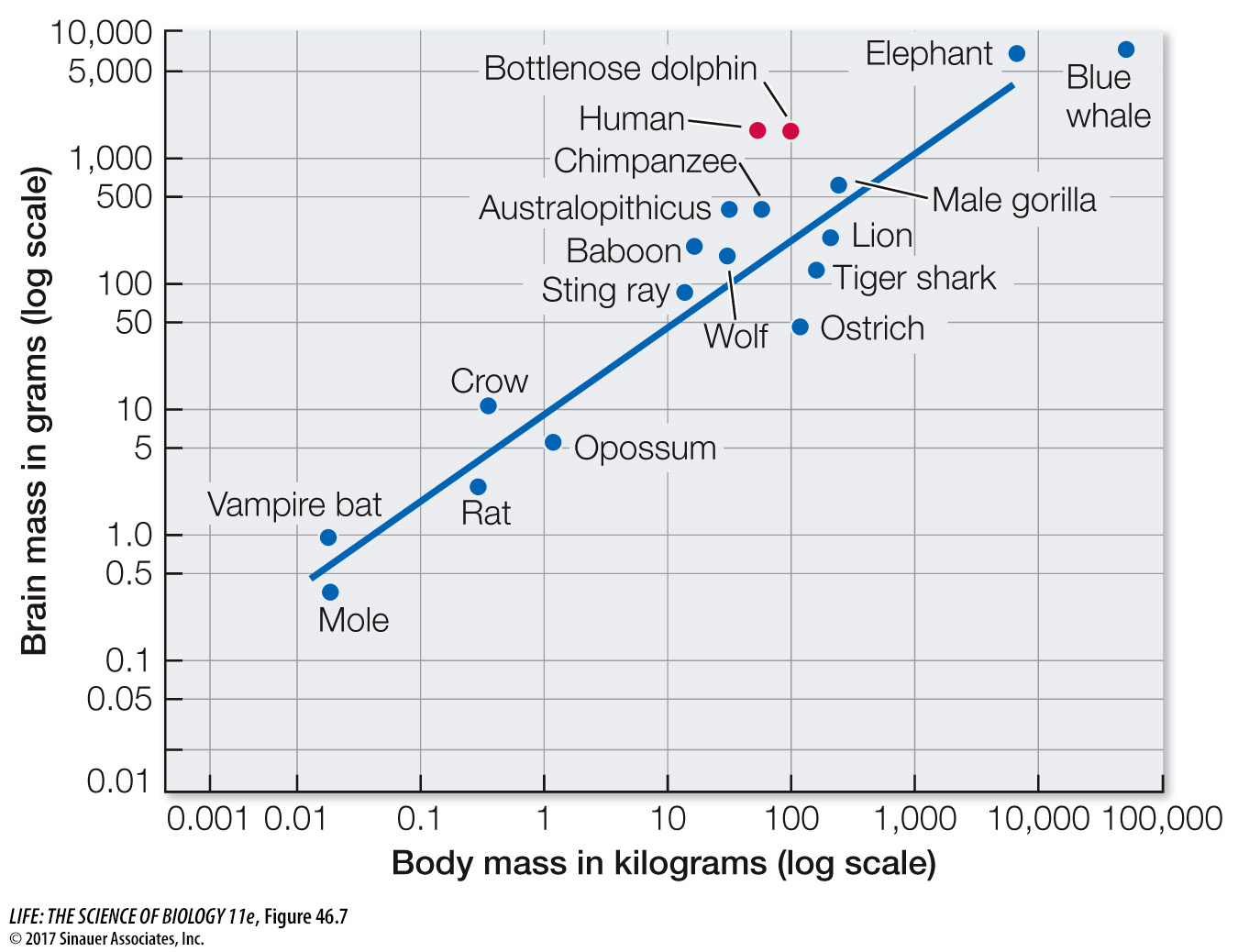The size of the human brain is off the curve
Humans are sometimes called “big-brain primates,” and that is an accurate characterization. Across vertebrate species there is a correlation between body size and brain size (Figure 46.7). Higher primates such as chimpanzees, baboons, and gorillas all fall above this regression line, but humans stand out because they are so far above the regression line. Gorillas are much larger than humans, but they have smaller brains. Elephants and whales have large brains, but they fall closer to the regression line. Dolphins and humans stand out as having much larger brains than would be predicted by their body sizes.

Figure 46.7 Evolution of the Human Brain Brain size scales to body size across a wide range of vertebrates. The higher primates have larger brains than predicted by the correlation, and humans stand outside this relationship with much bigger brains. The increase in brain size in humans is mostly due to an increase in the cerebral cortex. The human brain is also highly convoluted, and more of it is devoted to associative functions.
The correlation of brain size to body size does not tell the whole story of human brain evolution, however. In Figure 44.15, which compares the brains of four vertebrates, we see that the forebrain is larger than other brain regions, and in mammals this is seen as an elaboration of the cerebral cortex. If we look just at mammals, another feature is the degree of convolution of the cortex. Since the cortex is a layered, two-dimensional array of neurons, the area of cortex is increased by convolutions, which are greatest in humans. And finally, the percent of the cortex that is association cortex (i.e., devoted to the integration of information) is by far the greatest in humans. It is these evolutionary changes, primarily in the cortex, that provide the resources for the intellectual capacity of humans—a topic to which we will return at the end of the chapter.
